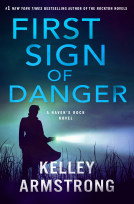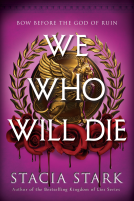
Python for MBAs
by Mattan Griffel; Daniel Guetta
This title was previously available on NetGalley and is now archived.
Send NetGalley books directly to your Kindle or Kindle app
1
To read on a Kindle or Kindle app, please add kindle@netgalley.com as an approved email address to receive files in your Amazon account. Click here for step-by-step instructions.
2
Also find your Kindle email address within your Amazon account, and enter it here.
Pub Date May 04 2021 | Archive Date Aug 11 2021
Columbia University Press | Columbia Business School Publishing
Talking about this book? Use #PythonforMBAs #NetGalley. More hashtag tips!
Description
This book is an introduction to programming with Python for MBA students and others in business positions who need a crash course. One of the most popular programming languages, Python is used for tasks such as building and running websites, data analysis, machine learning, and natural-language processing. Drawing on years of experience providing instruction in this material at Columbia Business School as well as extensive backgrounds in technology, entrepreneurship, and consulting, Mattan Griffel and Daniel Guetta teach the basics of programming from scratch. Beginning with fundamentals such as variables, strings, lists, and functions, they build up to data analytics and practical ways to derive value from large and complex datasets. They focus on business use cases throughout, using the real-world example of a major restaurant chain to offer a concrete look at what Python can do. Written for business students with no previous coding experience and those in business roles that include coding or working with coding teams, Python for MBAs is an indispensable introduction to a versatile and powerful programming language.
Advance Praise
"Business leaders everywhere increasingly need top technology and data skills to stay competitive. Mattan Griffel and Daniel Guetta bring Python to life through clear and compelling stories and case studies, showing you how to bring the power of variables, strings, and lists to immediately help your business and analytics. "
--Glenn Hubbard, Dean Emeritus and Russell L. Carson Professor of Finance and Economics, Columbia Business School
Available Editions
| EDITION | Other Format |
| ISBN | 9780231193931 |
| PRICE | $35.00 (USD) |
Average rating from 14 members
Featured Reviews
 jc C, Educator
jc C, Educator
Python for MBAs is an excellent book for introducing this very useful programming language to business people who don't have programming experience. In today's world it is a useful skill to acquire, and this versatile language can be very useful in many areas of business. The case studies and exercises are all relevant and based on real world examples so you can see exactly how you could make use of the language. The book is accessible, easy to read and easy to understand. Overall a great book and skill to learn.
 Keith B, Educator
Keith B, Educator
There is no question that the ability to harness technology has become an essential skill in business today. It is also the case that Python has become one of the most widely adopted programming languages, largely due to its versatility in solving problems and its user-friendly accessibility. So, despite the many self-help texts the already exist in this area, there is always room for another, especially one that seeks to acclimate beginners to the field quickly and competently. That is exactly what <i>Python for MBAs</i> attempts to accomplish and, for the most part, it succeeds in doing just that.
According to the authors, two business school faculty with considerable experience teaching the subject, the book is aimed at people who have never written computer code before, but feel the need to understand at least some part of this rapidly expanding area before the world passes them by altogether. In particular, the authors want to show readers how they can use Python to automate some of their daily tasks—such as financial record-keeping or responding to messages—as well as condensing large, unwieldly databases into more useable forms. To do this, they divide the writing into two distinct parts: Basic Python Skills and Dataset Management.
As promised, the book really does start at the beginning with an explanation of how to download the Python program and set up a home computer to facilitate the best programming environment. That is followed in Part 1 by three fairly compact chapters in which the basics of the language itself are presented, including how variables are created and used, conditional (i.e., True or False) statements, data lists, simple loop structures, and basic functions. All of this information is quite well explained and nicely illustrated with several examples. In fact, readers are repeatedly encouraged to work through these exercises on their own to gain confidence in each of the skills. If there is a shortcoming in this part of the text it would be that it seemed a little too terse and limited in presenting Python’s many features, although the discussion may be <i>just</i> enough to accomplish the authors’ goals.
In Part 2, the tone of the project changes considerably as the topic shifts from developing basic programming skills to learning to organize and manage large databases. The motivation for the entire second half of the book is the analysis of a case study the authors have written on Dig, a New York-based restaurant chain, and how the company used data analytics to improve its operations. Essentially, each of the five chapters in this part is devoted to acquainting the reader with various aspects of Pandas, which a Python-compatible software library used for manipulating large data bases and performing statistical and graphical analysis on that information. Once again, the authors do an excellent job of explaining each new topic that arises and applying case-based problems as examples.
Overall, I liked <i>Python for MBAs</i> and I think it will be a useful tool to introduce some essential material. However, I also found the book’s title to be a little misleading in that it promises to be more about developing Python programming skills than it actually delivers. In reality, the text is more centered on database management, with only as much Python knowledge as necessary to facilitate that aim; a title such as <i>Managing Databases With Python </i> might have been more appropriate. Also, the book may be difficult to use in a classroom setting because its exposition is so heavily tied to the authors’ embedded case study and it lacks the type of end-of-chapter problems and exercises found in traditional texts. Still, this is a worthy effort that should meet the needs of a sizeable audience of business professionals.
 Richard M, Reviewer
Richard M, Reviewer
_Python for MBAs_ by Mattan Griffel and Daniel Guetta is a high-level introduction to the Python programming language with special care taken to describe aspects of the language that will be of interest to business students and users. The book provides a good overview to both the Python programming language, the use of the Pandas data analytics module, and additional content customized for business needs, including data aggregation and advanced analytics.
The first part of the book, comprising chapters 1-4, serves as an introduction to the Python programming language. The introduction is both basic and complete, one that new users will find useful and advanced users will want to merely skim through. The introduction is well written, but contains nothing that isn't in many other Python language introductions.
The next three chapters, numbers 5-7, serve as an overview of the Python Pandas data analytics module, including how to load, examine, modify, and plot data using this library. This is the beginning of the part of the book that will be interesting to business students and users, as many of their interests will involve this type of activity. Again, the description is solid, but contains nothing that might not be found in other places, for example Joel Grus's _Data Science from Scratch_, or Jake VanderPlas's _Python Data Science Handbook_.
The final two chapters focus on data aggregation and advanced analytic techniques, and these are both useful and specialized to the interest of business students.
On the whole, the book is competent, well-written, and interesting. Most of the topics are covered in other sources, many of them freely available, but what is unique in this book is their summary here. One imagines that the book arose from a programming class for business students, and that it would serve similar niches well.
 Claudio A, Reviewer
Claudio A, Reviewer
Python is probably the most versatile of the modern programming languages. In my research institutions I see it used from engineers working on supercomputers to archaeologists cataloguing ancient artifacts. Therefore, I think it should be must too for economists/entrepreneurs to have the basics of this programming language to manage numbers and simulations in a much more powerful way that Excel for instance may provide. This book then covers a perceived gap. The volume is easy to follow. It requires however some familiarity with how to use computers.
 Jacinta S, Reviewer
Jacinta S, Reviewer
This is a great book. Very good introduction to Python. The only thing I would say is that the first exercise given is difficult for a first time programmer and could be offputting.
Other than that - excellent.
 Concert K, Reviewer
Concert K, Reviewer
Python is a programming language I know a little about and was able to hold my own when it came up in my Cybersecurity courses but is one that is on top of my list to learn some more about. While I am not an MBA student nor do I anticipate being one, I figured this book was as good as any to teach me a bit more about Python. And teach me it did - I did not realize that it was named after Monty Python and not the snake! (A snake is its icon on computers.) The first part of the book was a lot of the basic commands, most of this I knew, but it never hurts to give yourself a refresher to make sure that your syntax is correct so you're not constantly editing what you're writing after it errors out. I found it amusing it also mentioned stackoverflow - a website I am on a lot and that my software engineer coworkers recommend for coding help in pretty much all languages! Each of the parts of this book are broken down into easy to digest sections and even though I was familiar with the beginning - parts in the end that were all new to me never seemed to overwhelming to tackle. The second part o the book worked more with data and Jupyter Notebook which I was not really familiar with. Again, I am not an MBA student so none of the code in this book would 100% apply to me - but the functions and techniques used could certainly be applied to other things to use python for as well. I thought this book could be stuffy, overwhelming and boring - but it was nothing of the sort! Definitely recommended if you are an MBA student or if you're like me and just trying to learn everything you can about Python.
I received a free e-copy of this book from NetGalley in order to write this review, I was not otherwise compensated.
 Reviewer 186721
Reviewer 186721
The author went into great detail about the python programming. You could be an absolute beginner and will still feel comfortable learning this language from the book.
This is an excellent introduction to Python as well as a text geared towards business applications. As it's written by Columbia professors, you expect it to be thorough and easily followed and it was. The text is basically two parts: first part is one of the better Python introductions and the second part delves into business applications I assume would be helpful for MBAs.
I'm not a beginner with Python but I'm also not very good and I have zero experience with the business applications being taught. That said, I found the lessons difficult but not so difficult I got frustrated and gave up. This text is one of the better ones I've read and will be a reference guide for the future.
Thanks to the publisher and NetGalley for allowing me to review this text.
Readers who liked this book also liked:
Jennifer L. Armentrout and Rayvn Salvador
Reference, Romance, Sci Fi & Fantasy
Stacia Stark
General Fiction (Adult), Romance, Sci Fi & Fantasy
Banafsheh Sayyad
Health, Mind & Body, Multicultural Interest, Religion & Spirituality
Alessandra Olanow
Arts & Photography, Religion & Spirituality, Self-Help


















